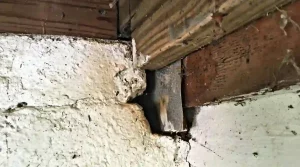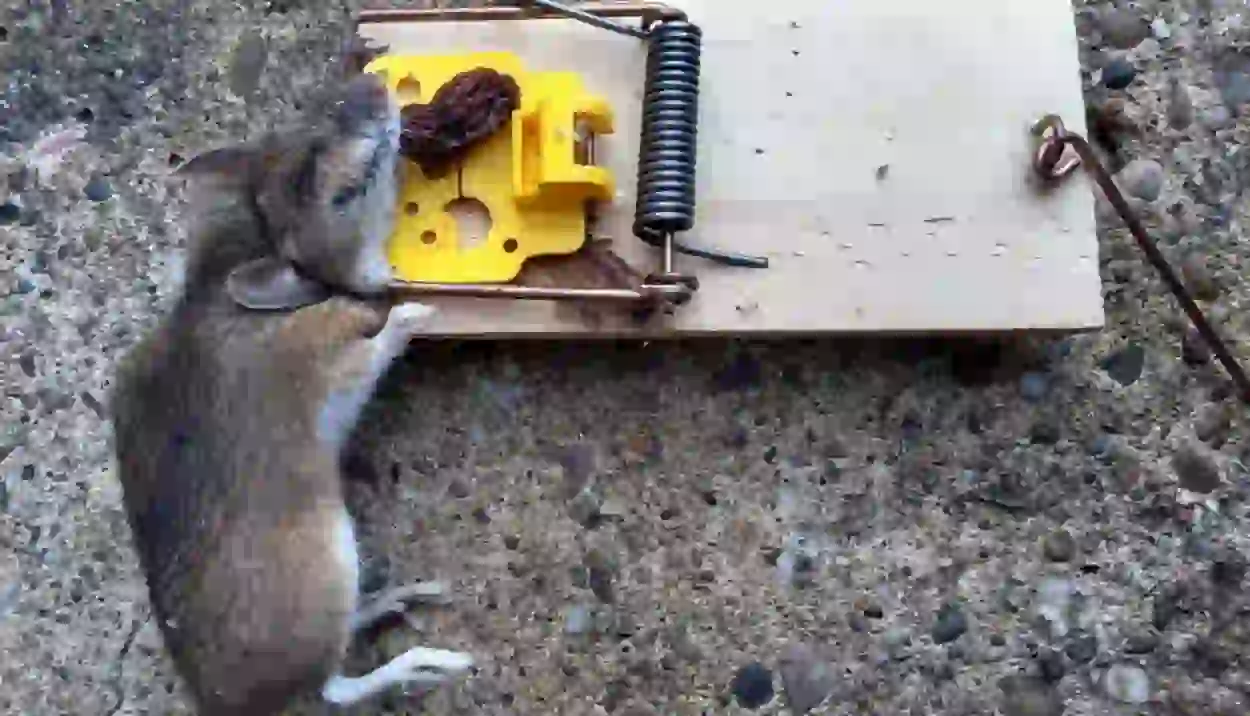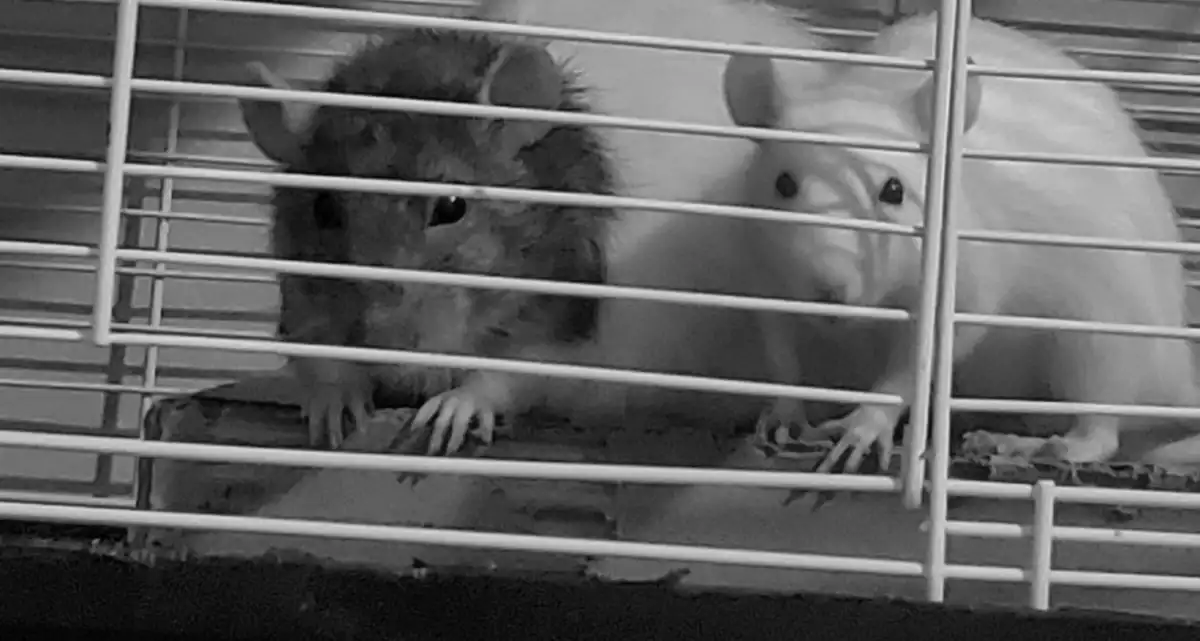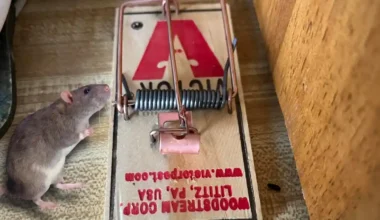When imagining a mouse hole, you might picture a small, curved entrance similar to the ones seen in cartoons. However, in reality, mice and other rodents can squeeze through holes and cracks no bigger than a nickel. To block holes so mice can’t get in, you generally have to seal any openings both inside and outside.
Let’s get started.
How to block holes so mice can’t get in

This can usually be done with low-cost materials from your local hardware store. Follow the steps below to block holes so mice can’t get in:
1. Trap existing mice inside your home
Don’t caulk up yet. First, look for signs that mice have entered your home, such as mouse droppings. If you have mice living in your home, sealing up the interior holes could trap them in your walls—and create a terrible stench when they die.
Use regular, humane mouse traps to eliminate the pests before blocking interior mouse holes.
If there aren’t any visible holes, drill a small hole in your wall and place a loaded trap right in front of it.
To trap rodents using snap traps, place them in a “T” shape with the wall, with a pea-sized amount of peanut butter as bait. Look for areas of high rodent activity (where you find droppings or nests) and place the traps. If you are unable to catch the mice yourself, consider reaching out to a professional exterminator for assistance.
2. Caulk up small holes with steel wool
When you have taken measures to get rid of mice, you want to block holes so mice can’t get in anymore.
Obtain steel wool either through online stores or by visiting a local hardware store.
Fill the hole completely by stuffing the steel wool into it, then secure it in place by applying caulk to the edges to prevent mice from removing it.
3. Block larger holes using cement or metal sheeting
Get a cement mixture either through an online search or by visiting a hardware store near you. Alternatively, get metal sheeting that can be attached over the opening. Ensure that you have the correct measurements of the hole before procuring your materials, so you are aware of the necessary quantity.
Take steps to ensure that there are no open spaces in the cement or sheeting that a mouse could exploit.
Additionally, consider using hardware cloth or lath screen, which is used as a backing material for plaster, to cover the holes. Avoid using wood as it can be gnawed through by rodents.
4. Don’t overlook cracks in closets and along the baseboard
If your baseboards are not perfectly aligned with the floor, get a sealant or caulk and fill any gaps to block holes so mice can’t get in.
Inspect the area where the wall meets the floor in the back of closets, paying special attention to the corners. Also, don’t forget to check your attic and basement, focusing on exterior walls as they may provide a direct route for rats to break into your home.
5. Block cabinets and door holes
Buy a tube of caulk from an online retailer or a hardware store. Inspect your home for cracks, focusing on areas such as the base and backs of cabinets where they meet exterior walls and the vicinity of your fireplace.
Keep in mind that rats are attracted to warm places. So, you want to seal any crevices you come across with caulk, as they may try to enlarge them and break in.
6. Use steel screens to close the vents
While some openings on the exterior of your home serve a purpose, they can also provide a means of entry for rodents. To block holes so mice can’t get in, purchase steel screens from a local hardware store or online and cover the vents. This will ensure that the vents function correctly while deterring outdoor pests.
If the vent cover is not sufficient to hold the screen in place, use a caulk to secure it.
Don’t forget to examine roof vents and chimneys, and install screens to prevent rodents from accessing these areas.
7. Close the cracks around your doors and windows
Inspect the exterior of your house to ensure that all doors and windows are securely sealed. If you notice any openings, use caulk or foam to block holes so mice can’t get in.
This will not only improve the cleanliness and energy efficiency of your home but also prevent mice and other pests from entering.
If you experience a draft during cold weather, it may indicate a crack that could be used by mice as a point of entry into your home, so caulk it up.
8. Use steel screens to cover the vents and drains
It is important to not only cover the exterior opening of a vent or drain but also the interior opening. Floor drains in the basement, garages, or laundry rooms can provide a convenient entry point for rodents. You can usually place the screen directly under the vent or drain cover and secure it in place using the cover itself.
9. Fit sheet metal around pipes to cover gaps
Lastly, inspect your pipes, including those under your sinks. If there are any gaps between the pipes and the walls or cabinets, install a piece of sheet metal to cover the gap and secure it in place.
Your local hardware store can help your blocking adventure by cutting the metal to the right size for you. To ensure to get a proper fit, measure the pipe and make sure the hole cut in the sheet metal corresponds to the size of the pipe.
What stops mice from coming inside?
While blocking the holes can stop mice from getting in, other things you need to put in place to stop the mice from coming inside include:
1. Get rid of mice food sources
You probably have a series of food sources that can potentially attract mice to your home. To prevent a visit, make storing all food, including pet food, in airtight containers, a habit.
Clean up any food spills or messes to eliminate the scent of food in your home. Promptly wash dishes and utensils after use instead of letting them accumulate in the sink.
Any food left out overnight will attract rodents, so if you have had previous issues with rodents, never leave pet food out overnight.
Put any leftovers back in the airtight container and replace them in the morning. Mice usually search for food close to where they reside, so eliminating potential food sources around your home can be an effective way to stop them from coming inside.
2. Weed around your home
Weeds and bushes near your walls can make an ideal habitat for mice.
So, regularly sweep or rake the brush and keep it away from the exterior walls of your house.
Keep your yard grass trimmed to a height of no more than 12 inches (30 cm). Additionally, keep any shrubs within 100 feet (30 m) of your home well-groomed and trimmed short.
3. Keep the garbage can away from your entrance
While you take steps to block holes so mice can’t get in, you don’t want to keep your trashcan next to your entrance. Consider keeping your trash cans at a minimum distance of 100 feet (30 m) from the exterior walls of your home.
Use closed containers to prevent access to the trash by mice and other rodents. If you have a compost pile, keep it at a minimum distance of 100 feet (30 m) from your home as well. Use rodent-proof bins for your trash and clean them regularly with soap and water.
4. Don’t welcome junk nearby
Make sure to take steps to haul away any junk appliances or cars sitting in your yard. They typically make a good home for mice. Contact your local junk removal service to have any unwanted items removed.
5. Keep trash cans and woodpiles about 1 ft off the ground
Ground-level garbage cans and woodpiles are good mice hideouts. So, buy stands or holders from a hardware store or online, or build your own and lift the woodpiles and can.
Final thoughts
If you take these necessary steps to block holes so mice can’t get in but still encounter evidence of mice presence, it may be time to seek the help of a professional exterminator.
You may have an infestation, meaning it may be too late for DIY methods to stop them. Professionals can evaluate the mice problem and tailor their services with the right tools to effectively control mice presence. Don’t waste time giving your local pest control a call for rescue.





